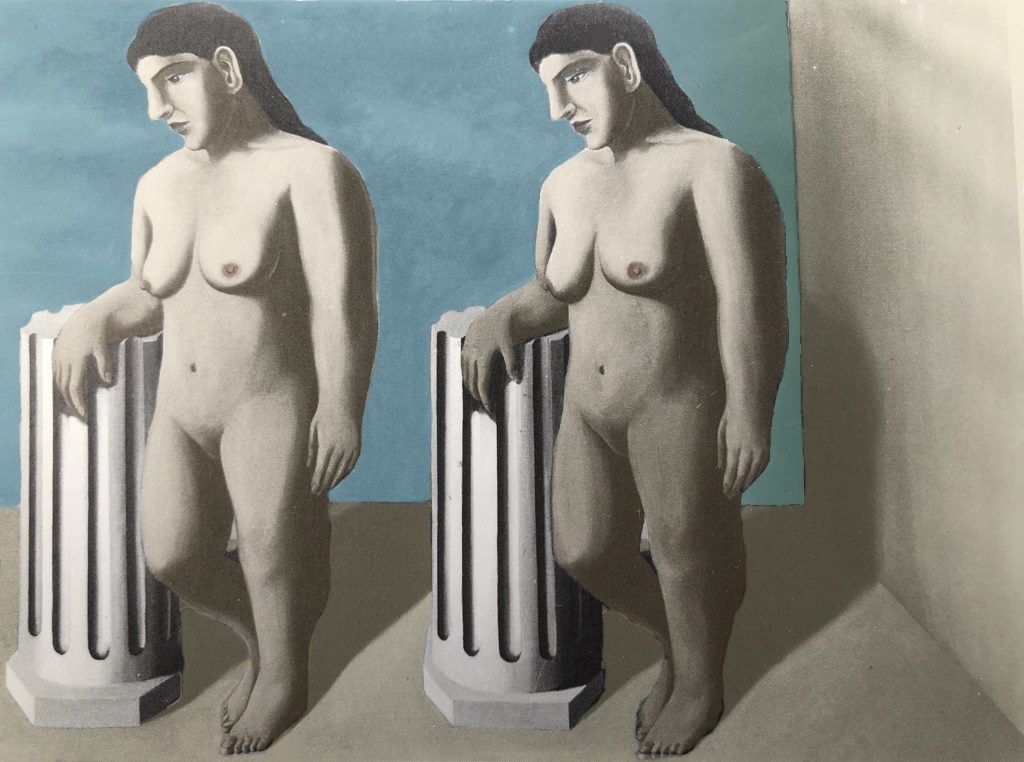Researchers Uncover the Final Piece of a Missing Magritte, Solving an 85-Year-Old Mystery
The artist once cut apart a critically acclaimed work and painted over the pieces. Now, the final piece has been recovered.
 René Magritte, The Enchanted Pose with restored colors. © Succession René Magritte c/o SABAM © ULiège.
René Magritte, The Enchanted Pose with restored colors. © Succession René Magritte c/o SABAM © ULiège.
Researchers in Belgium have come upon a René Magritte painting that harbors a long-sought secret.
In the early 1930s, the Belgian artist was poor enough that he reused canvases, painting over one work with another. In one case, he cut one of his paintings—The Enchanted Pose (1927)—into four pieces and painted over each one to create discrete new works. Now, researchers have discovered the fourth and final piece of the original work, solving an 85-year-old mystery.
The work was unearthed at none other than the Magritte Museum, in Brussels, Belgium, where researchers were inspecting all the paintings in the collection as part of a larger research project.
“I screamed something like ‘Oh my gosh!’ but less polite,” said Catherine Defeyt, a researcher at the University of Liège’s European Center for Archaeometry, of the moment of the discovery.
Pieces of the puzzle have been coming to light for four years; the three other pieces were found in three other major museums.
The first piece, The Portrait (1935), was uncovered by curator Anne Umland and conservator Michael Duffy at New York’s Museum of Modern Art in 2013. It shows two identical female nudes side by side, each with an arm resting on a broken column.
The whereabouts of the original painting were listed in the Magritte catalogue raisonné as unknown; the only existing photo of it was in black and white. Umland and Duffy were inspecting The Portrait by way of conservation research in preparation for an exhibition there.
